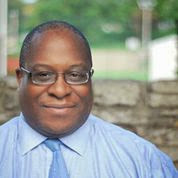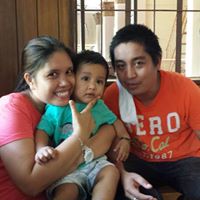Kenneth W Gay
age ~66
from Tucson, AZ
- Also known as:
-
- Kenneth Warren Gay
- Ken W Gay
- Phone and address:
-
7230 San Blas Dr, Tucson, AZ 85704
5207974650
Kenneth Gay Phones & Addresses
- 7230 San Blas Dr, Tucson, AZ 85704 • 5207974650
- 7230 N San Blas Dr, Tucson, AZ 85704 • 5205510258
Work
-
Position:Professional/Technical
Education
-
Degree:Associate degree or higher
Emails
Name / Title
Company / Classification
Phones & Addresses
BLUE SKYE ENTERPRISES, INC
REGALIA PRODUCTS, INC
7K ENTERPRISES LLC
ESKR HOLDINGS, LLC
Incorporator
KMG ENTERPRISES, INC
BLUE WAVE ENTERPRISES, INC
Us Patents
-
Multi-Source Positioning System For Work Machines
view source -
US Patent:7139651, Nov 21, 2006
-
Filed:Mar 5, 2004
-
Appl. No.:10/795198
-
Inventors:Timothy J. Knowlton - Benson AZ, US
Kenneth W. Gay - Tucson AZ, US -
Assignee:Modular Mining Systems, Inc. - Tucson AZ
-
International Classification:G06F 19/00
-
US Classification:701 50, 701 4, 701 23, 701 45, 701214
-
Abstract:A three-dimensional and a two-dimensional GPS unit periodically provide coordinate positions of points on the work machine and are combined with a Kalman filter to produce a point of reference on a work machine. The point of reference is improved by combining the position with an inertial position derived from accelerometer data in another Kalman filter. Additionally, the two-dimensional GPS unit provides a heading that is combined with an inertial orientation derived by the angular rate from a gyroscope in another Kalman filter to produce a precise orientation estimate. Inclinometers provide pitch and roll of the work machine. With the point of reference, orientation estimate, pitch, roll and known geometry of the work machine, the GPS unit calculates the location and orientation of machine components and continuously tracks its movement throughout the mine. Additionally, the accelerometers and gyroscope provide position and orientation when the GPS units are inoperable.
-
Conversion Clock Randomization For Emi Immunity In Temperature Sensors
view source -
US Patent:7193543, Mar 20, 2007
-
Filed:Sep 2, 2005
-
Appl. No.:11/219399
-
Inventors:Scott C. McLeod - Oro Valley AZ, US
Kenneth W. Gay - Tucson AZ, US -
Assignee:Standard Microsystems Corporation - Hauppauge NY
-
International Classification:H03M 1/00
-
US Classification:341123, 374170
-
Abstract:In one set of embodiments, a temperature measurement system may include an analog to digital converter (ADC) to produce digital temperature readings according to a difference base-emitter voltage (ΔV) developed across a PN-junction. A clock generating circuit may be configured to provide a sampling clock used by the ADC, which in some embodiments may be a delta-sigma ADC, in performing the conversions. The clock generating circuit may be configured to change the frequency of the sampling clock a specified number of times within each one of the one or more conversion cycles to reduce an error component in the temperature measurement, where the error component is produced by an interfering signal, such as an electromagnetic interference (EMI) signal being coherent with the sampling clock, and/or a noise residing on the voltage supply and also being coherent with the sampling clock.
-
Detecting Closure Of An Electronic Device Using Capacitive Sensors
view source -
US Patent:8149000, Apr 3, 2012
-
Filed:Oct 11, 2007
-
Appl. No.:11/870529
-
Inventors:Ian F. Harris - Kings Park NY, US
Drew J. Dutton - Austin TX, US
Kenneth W. Gay - Tucson AZ, US -
Assignee:Standard Microsystems Corporation - Hauppauge NY
-
International Classification:G01R 27/26
-
US Classification:324661
-
Abstract:System and method for determining closure of an electronic device. The electronic device may include a top portion and a bottom portion, and may be connecting via a hinge or other closing mechanism. The top portion and/or the bottom portion may include one or more capacitive sensors which provide signals corresponding to physical contact and a controller coupled to the one or more capacitive sensors. The controller may operate to receive the signals from the one or more capacitive sensors, determine if the electronic device has been closed based on the received signals, and initiate a sequence of events corresponding to the closure of the electronic device. The sequence of events may result in the device entering a low power state.
-
Brushless, Three Phase Motor Drive
view source -
US Patent:8368334, Feb 5, 2013
-
Filed:Nov 18, 2009
-
Appl. No.:12/620726
-
Inventors:Lynn R. Kern - Tucson AZ, US
Scott C. McLeod - Oro Valley AZ, US
Kenneth W. Gay - Tucson AZ, US -
Assignee:Standard Microsystems Corporation - Hauppauge NY
-
International Classification:H02P 6/00
-
US Classification:31840035, 31840032, 31840034, 318700
-
Abstract:A control method for a brushless, three-phase DC motor. A voltage induced by rotation of a rotor may be sampled at a first expected zero crossing value to produce a first sampled voltage value. An average of a plurality of sampled voltage values, including voltage values sampled at a plurality of prior expected zero crossing values and the first sampled voltage value, may be calculated. The first sampled voltage value may be subtracted from the calculated average to produce a delta zero crossing error. A pulse-width modulation duty cycle may be adjusted based on the delta zero crossing error. The pulse-width modulation duty cycle may be used to control a rotational velocity of the rotor.
-
Adjusting Delivery Of Current In A Connection Based On Temperature
view source -
US Patent:20120294332, Nov 22, 2012
-
Filed:May 17, 2011
-
Appl. No.:13/109446
-
Inventors:Morgan H. Monks - Tempe AZ, US
Kenneth W. Gay - Tucson AZ, US
Timothy J. Knowlton - Benson AZ, US -
International Classification:G01K 13/00
-
US Classification:374152, 374E13001
-
Abstract:Adjusting current based on temperature. A change in temperature of a connection between a first device and a second device may be measured. The change in temperature may be performed while the first device provides current to the second device over the connection. If the change in temperature is above a threshold, the current being provided from the first device to the second device may be reduced. The change in temperature may be performed by the first device and/or the second device, e.g., by measuring the temperature of a connector of the connection.
-
Gesturing Architecture Using Proximity Sensing
view source -
US Patent:20130162517, Jun 27, 2013
-
Filed:Dec 22, 2011
-
Appl. No.:13/334477
-
Inventors:Kenneth W. Gay - Tucson AZ, US
-
International Classification:G09G 5/00
-
US Classification:345156
-
Abstract:Proximity based system and method for detecting user gestures. Each of a plurality of proximity sensing circuits may collect digital data. Each proximity sensing circuit may include an antenna configured to transmit and receive electromagnetic signals and a shield driver configured to shield signals transmitted by the antenna in one or more directions. The digital data may be collected based on electromagnetic signals received from another proximity sensing circuit via the antenna. The received electromagnetic signals may be modified by one or more user proximity gestures. The digital data from each of the plurality of proximity sensing circuits may be received by a coordinating circuit. The coordinating circuit may produce coordinated digital data from the digital data received from each of the plurality of proximity sensing circuits. The coordinated digital data may be configured for use in determining that a user performed the one or more user proximity gestures.
Googleplus

Kenneth Gay
Work:
CANI Communications Group - CEO

Kenneth Gay
Tagline:
Born: Alabama 1971, Raised: Pennsylvania & Virginia mostly, College Major: Computer Science, Degree: No, Continued Education After School: Yes! Current Occupation: Infopreneur.

Kenneth Gay

Kenneth Gay

Kenneth Gay

Kenneth Gay

Kenneth Gay

Kenneth Gay
view source
Kenneth Gay
view source
Kenneth Christopher Gay
view source
Kenneth Gay
view source
Kenneth Gay
view source
Kenneth Gay
view source
Kenneth Bobo Gay
view source
Kenneth Gay
view sourceClassmates

Kenneth Gay
view sourceSchools:
Bentley High School Burton MI 1965-1969
Community:
Nancy Osborn, Joe Laney

Kenneth Gay
view sourceSchools:
Kenly Elementary School Tampa FL 1955-1959
Community:
Joe Mestas, Diana O'steen, Sandra Evans, Paulette Folsom

Kenneth Gay
view sourceSchools:
Stephen A. Douglas School Chicago IL 1959-1963
Community:
Peggy Mcdowell, Jeffery Smith, Ruth Bradley

Kenneth Gay
view sourceSchools:
Buckhorn High School Buckhorn KY 2002-2006
Community:
Alisha Abner, Rhonda Peters, Terry Coffey, Kenneth Sandlin

Kenneth Gay
view sourceSchools:
Seaboard High School Seaboard NC 1950-1954
Community:
Iola Gay, Carol Hartline, Linda Daniel, Claire Hall, Donald Moore, Molly Conwell, Kenneth Gay, Jean Harris, Patricia Edwards, Alexander Faison, Patsy Ivey, Marilyn Conwell

Kenneth Gay
view sourceSchools:
Seaboard High School Seaboard NC 1942-1954
Community:
Iola Gay, Carol Hartline, Linda Daniel, Claire Hall, Donald Moore, Jean Harris, Eula Howell, Alexander Faison, Charles Birdsong, Patsy Ivey, Marilyn Conwell, Marvin Long

Kenneth Gay
view sourceSchools:
Holmes High School Edenton NC 2000-2004
Community:
Chris Mingin, Walter Gillespie, Christian Evick, Latoya White, Matthew Randall, Kris Simons, Tabitha Waterfield, Terry Smith, Michelle Bruner, Angela Brothers

Kenneth Gay | Effingham C...
view sourceYoutube
Myspace
Flickr
Get Report for Kenneth W Gay from Tucson, AZ, age ~66
















